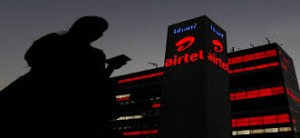Airtel embarks on K2 Telecom subscriber migration
 KAMPALA, FEBRUARY 26 – Airtel last week began the migration of ex-Buganda kingdom operator K2 Telecom subscribers to its network. The development follows the conclusion earlier this month, of a sale and purchase agreement between the two parties.
KAMPALA, FEBRUARY 26 – Airtel last week began the migration of ex-Buganda kingdom operator K2 Telecom subscribers to its network. The development follows the conclusion earlier this month, of a sale and purchase agreement between the two parties.
Airtel declined to comment on the reports but it is understood that besides taking over K2’s subscriber base whose numbers were last known to be in the region of 600,000, Airtel will also maintain K2’s number range. That means that current and prospective K2 subscribers will continue to use the 073 carrier code in pretty much the same way ex-Warid customers are still using the 070 code.
As earlier reported by this site, Airtel will also maintain K2’s branding in the market place.
The fate of K2’s fifty permanent employees and 160 temps remains uncertain however, since there has been no communication about their status.
Analysts are interpreting Airtel’s reticence about its acquisition of K2 as indicative of the high risks associated with the deal. K2 is an emotive brand driven more by loyalty to Buganda and the person of the Kabaka than any other rational consumer choice. Knowledge that the business has changed ownership could easily see the subscriber base dissipate.
Though relatively small K2’s subscriber base is seen as adding value to Airtel in a market where top-line growth is increasingly marginal. Sixty seven percent of K2’s subscribers are active with Kampala generating some 200,000 calls a day. Daily traffic from Masaka, Mubende and Jinja avteraged 80,000, 40,000 and 15,000 call respectively.
According to the 2016 Q3 UCC market report, telecoms whose combined subscriber base stood at 22.3 million were largely depending on on-net traffic, perhaps because of the offers that kept customers locked-in. On-net traffic was 6.1 billion minutes compared to just 269,000 off-net minutes during the quarter.
Growth remains marginal, perhaps because the addressable market is almost full subscribed. According to the same UCC report, tele-density stood at 61.1 percent for the quarter for a national population of 36.5 million. If the fact that nearly 60pc of Uganda’s population are under 16 if factored in, the teleco’s are fighting for a market that has reached its peak, atleast until other fundamentals change.

 African Heads of state head to South Korea next week for Summit talks
African Heads of state head to South Korea next week for Summit talks
 Trading leads as main source of income for Ugandans
Trading leads as main source of income for Ugandans
 New leadership for bankers’ umbrella as total assets top $12 billion
New leadership for bankers’ umbrella as total assets top $12 billion
 Brussels Airlines to announce Nairobi service
Brussels Airlines to announce Nairobi service
 SITA promises enhanced travel experience after Materna acquisition
SITA promises enhanced travel experience after Materna acquisition
 Saudia’s 105 aircraft order stretches A320neo lead over rival Max
Saudia’s 105 aircraft order stretches A320neo lead over rival Max
